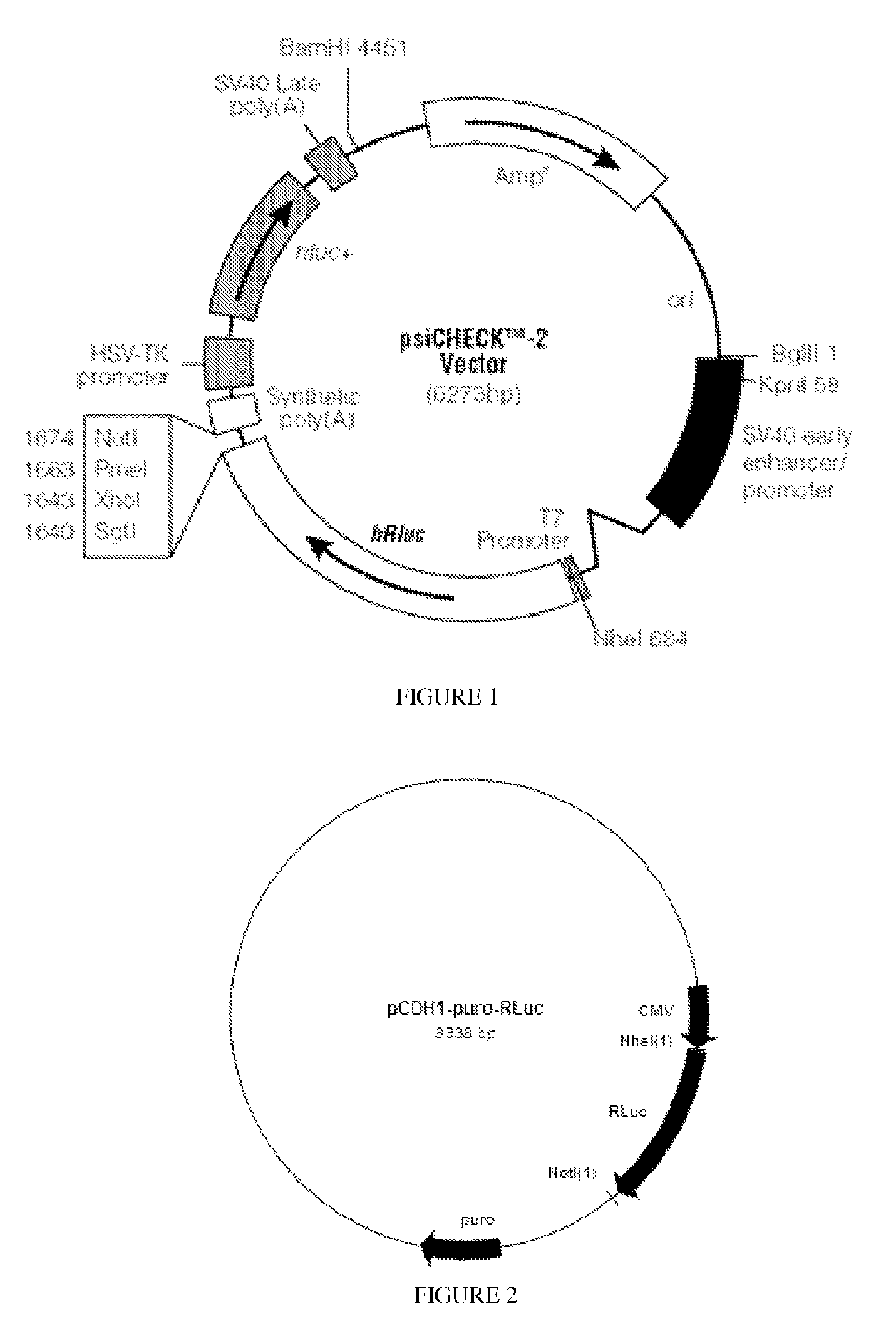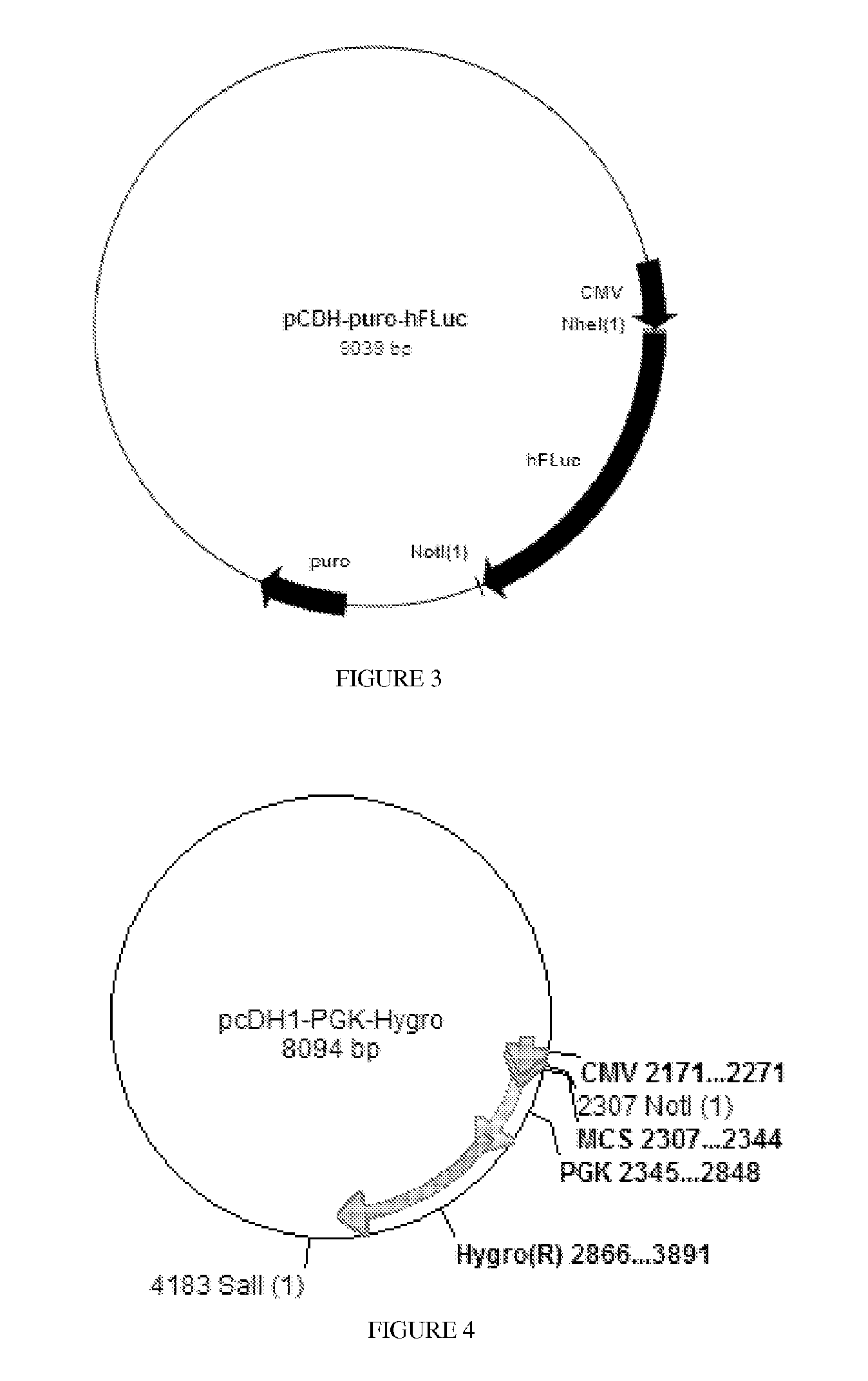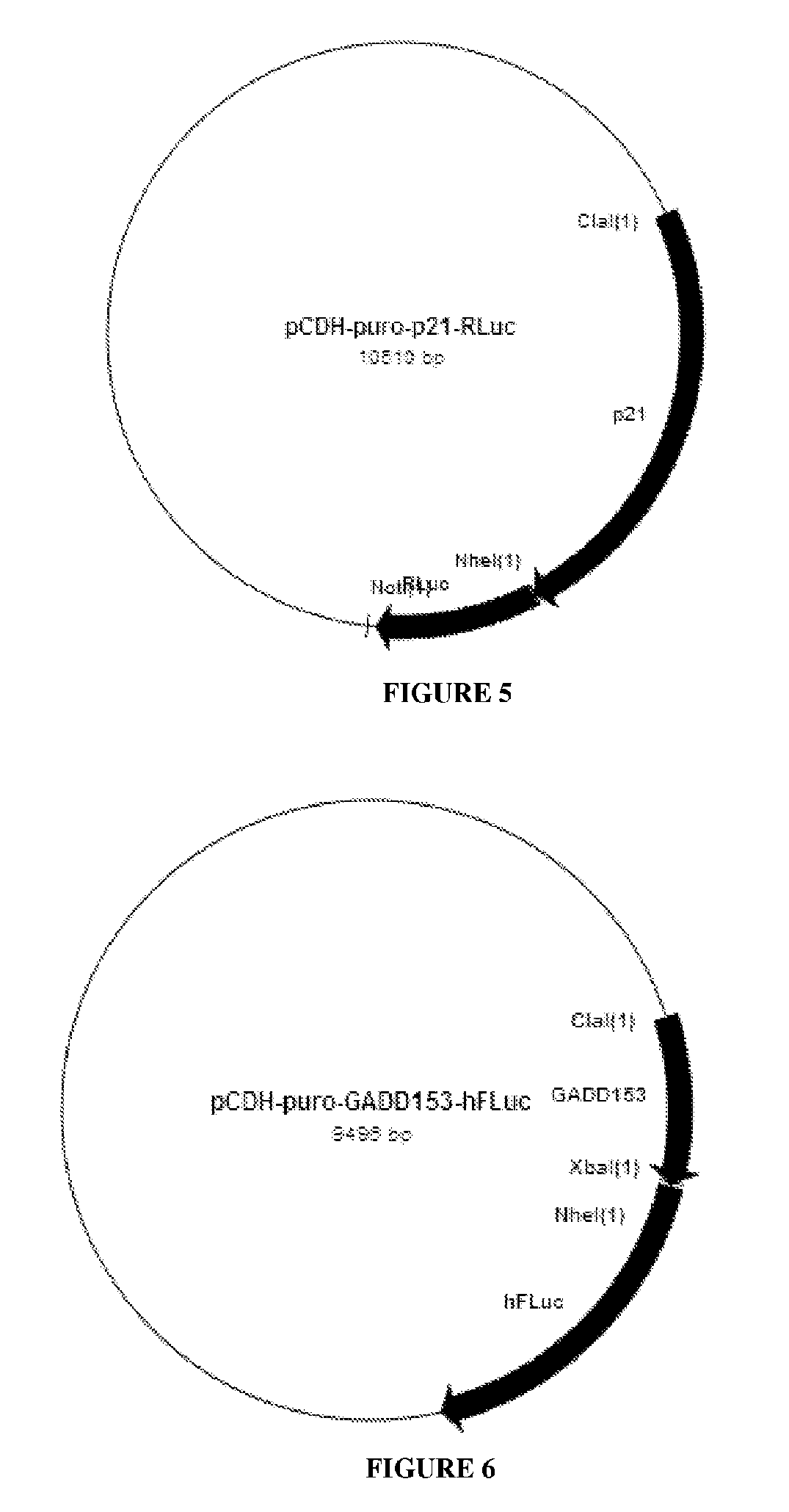Vitro method for high throughput screening of genotoxic agents in eukaryotic cells
a genotoxic agent and high throughput technology, applied in the field of molecular engineering cell lines with multi-component reporter systems, can solve the problems of congenital defects in offspring, damage to gametes, new undesirable strains of microorganisms, etc., and achieve rapid genotoxicity, high throughput, and cost-effective
- Summary
- Abstract
- Description
- Claims
- Application Information
AI Technical Summary
Benefits of technology
Problems solved by technology
Method used
Image
Examples
example 1
[0061]The following example illustrates the construction of HCT116-p21RLuc-GADD153FLuc-p53Bgal stable cell line to detect DNA damage according to the first, second and third aspects of the invention. In addition it also outlines how this stable cell line is used to test a genotoxic agent, for example Etoposide when used according to the method described in the fourth aspect of this invention.
[0062]Components of this system:
[0063]1) The promoters—human p21, hamster GADD153 and human p53
[0064]2) The reporter genes—Renilla Luciferase (RLuc), Firefly Luciferase (FLuc) and Beta Galactosidase (Bgal)
[0065]Construction of the Lentivectors encoding the Biosensor Reporter casettes:
[0066]Step 1: Cloning of the Reporter Proteins—Renilla Luciferase (RLuc), Firefly Luciferase (FLuc).
[0067]The source of the RLuc is pSiCHECK2 (Promega), which is shown in FIG. 1. The RLuc was flanked by Nhe I (5′) and Not I (3′) sites. This was inserted into the vector pCDH-CMV-MCS-EF1-puro (from System Biosciences)...
example 2
[0078]Microplate Preparation
[0079]The assay is carried out in a 96-well, white, clear-bottomed microplates. For example F96 MicroWell™ Plates, Cat. No. 136101, from Nalgene Nunc, USA. The microplates are effectively filled using multi-channel pipette.
[0080]Assay Protocol
[0081]The assay protocol standardized by us is described here. A stock of the test compound is prepared in 2% v / v solvents (including but not limited to DMSO or PBS) and this stock is used to make serial dilutions for the assay. The maximum testing dose of the compounds is set at 1 mM or 500 μg / ml or less if limited by solubility or cytotoxicity. The test compound is assayed for cell viability by standard cell viability / cytotoxicity assays (for example MTT assay as shown in the graphs).
[0082]The MTT assay is performed using the MTT reagent (Sigma) dissolved in PBS (5 mg / ml). Briefly, the Genotox sensor cells are incubated with ten fold serial dilutions of the test compound in a 96-well microplate. After 24 h of incub...
example 3
[0092]Induction of the Biosensors Using Known Genotoxins
[0093]As an example of the reporter induction, HCT116-p21RLuc-GADD153hFLuc-p53Bgal cells treated with different concentrations of, Methyl methanesulphonate (a direct acting genotoxin) and cyclophosphamide (a progenotoxin) is shown in FIGS. 9, 10A and 10B. These two compounds are known to those skilled in the art as genotoxic agents and may be used as positive controls when using the method of the invention.
[0094]103 cells were seeded per well in 100 μl of McCoy's media with 10% FBS was incubated overnight (37° C., 5% CO2, 100% humidity) in a 96-well plates (as two sets). The next day, the cells were incubated with serial two fold dilutions of MMS and Cyclophosphamide dissolved in 1% v / v aqueous DMSO for 24 h. The cells treated with cyclophosphamide were incubated with S9 fraction mix as described above for 3 h and later washed with PBS. After incubation of 24 h, the cells were washed in PBS and MTT assay was performed on one se...
PUM
| Property | Measurement | Unit |
|---|---|---|
| solubility | aaaaa | aaaaa |
| humidity | aaaaa | aaaaa |
| humidity | aaaaa | aaaaa |
Abstract
Description
Claims
Application Information
 Login to View More
Login to View More - R&D
- Intellectual Property
- Life Sciences
- Materials
- Tech Scout
- Unparalleled Data Quality
- Higher Quality Content
- 60% Fewer Hallucinations
Browse by: Latest US Patents, China's latest patents, Technical Efficacy Thesaurus, Application Domain, Technology Topic, Popular Technical Reports.
© 2025 PatSnap. All rights reserved.Legal|Privacy policy|Modern Slavery Act Transparency Statement|Sitemap|About US| Contact US: help@patsnap.com



